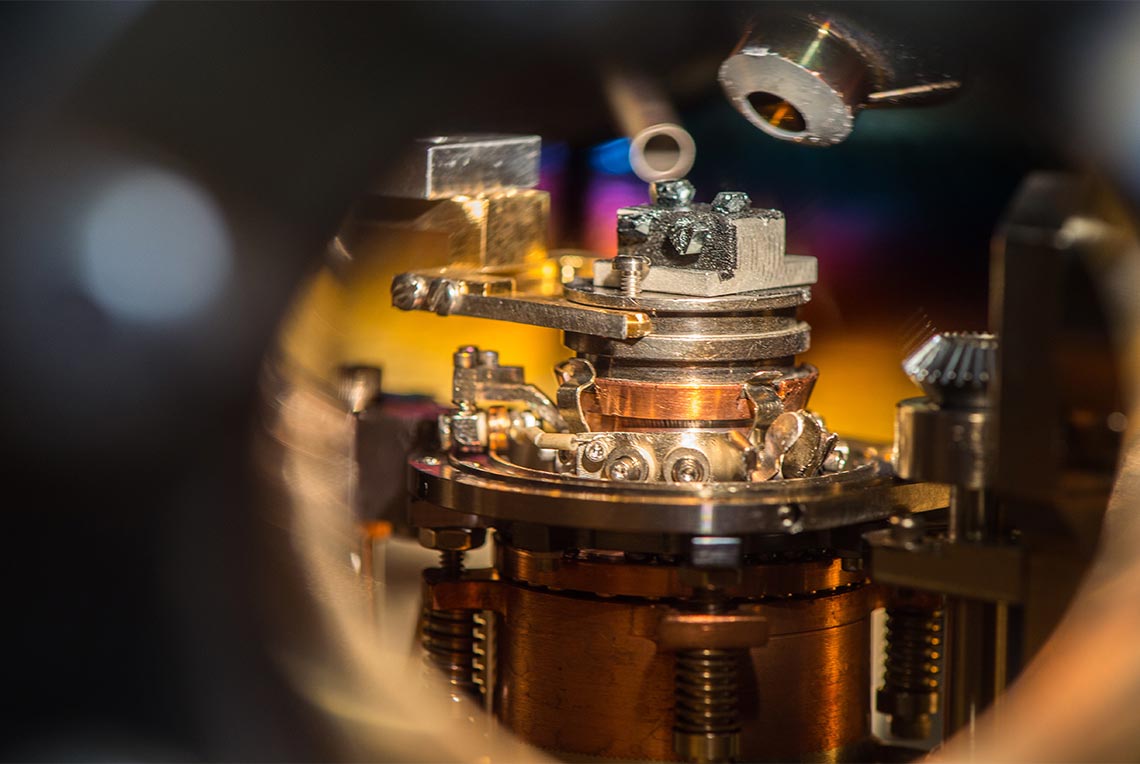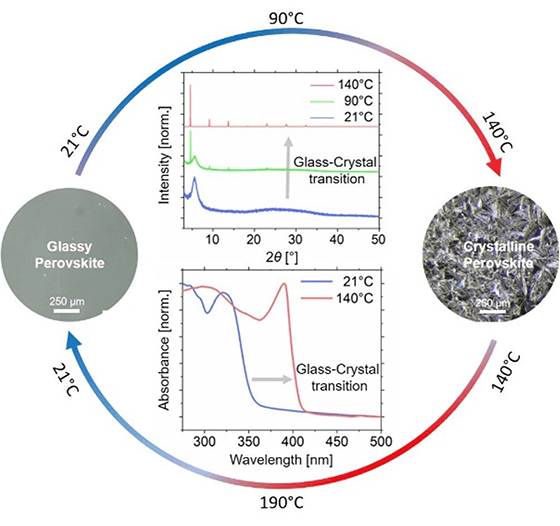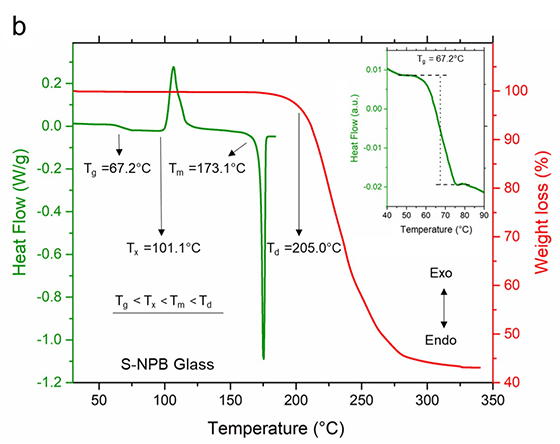Reversible Crystal–Glass Transition in a Metal Halide Perovskite
December 6, 2020
A 2D metal halide perovskite (MHP) was structurally tailored using bulky chiral organic cations to exhibit an unusual confluence of exceptionally low melting temperature (175 °C) and inhibited crystallization. The chiral MHP can thus be melt‐quenched into a stable glassy state, otherwise inhibited in the analogous racemic MHP.
Scientific Achievement
We demonstrated glass formation and a reversible glass-crystal transition in a 2D MHP with distinct optoelectronic properties in respective phases.
Significance and Impact
2D halide perovskites are introduced into the field of semi-conducting glasses through
deliberate synthetic design of the hybrid structure, resulting in facile and reversible
glass–crystalline switching under moderate thermal cycling for prospective application
in memory, computing, nonlinear optics, communication, and renewable energy.
Research Details
- Established design rules for achieving crystal-glass transition in 2D MHPs, through the example of [S-(−)-1-(1-naphthyl)ethyl-ammonium]2PbBr4 (S-NPB), with each phase offering a distinct optical absorbance profile (top panel).
- Demonstrated reversibility in the crystal-glass transition using melt-quenching and moderate heat treatment (top panel).
- Evaluated characteristic temperatures—i.e, Tg (glass transition), Tx (crystallization), Tm (melting) and Td (degradation)—for glass-crystal transition, using thermal analysis (bottom panel).











